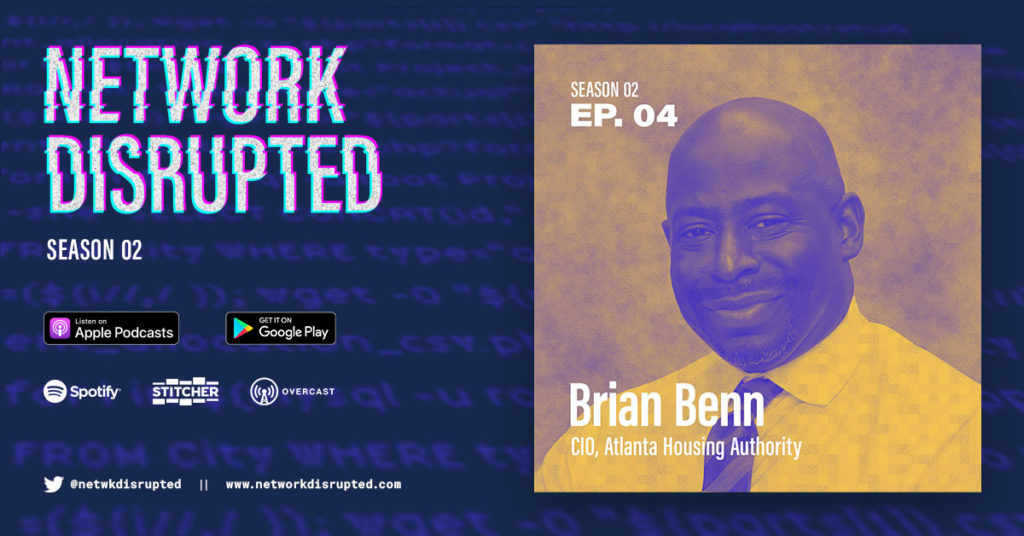In Atlanta, affordable housing also means tech access
Atlanta Housing Authority CIO Brian Benn shares how the data-driven agency delivers technology access for residents along with affordable housing.

Most public and private services are now offered on a digital-by-default basis. Certainly, having an equitable opportunity to participate in society today requires a baseline level of access to technology.
The Atlanta Housing Authority (AHA), which serves almost 60,000 Atlanta residents, believes that there is an incredible opportunity to provide that basic access alongside quality affordable housing.
Brian Benn, CIO of the AHA, is the driving force behind his organization making good on that belief. That includes providing access to a reliable internet connection, an internet-enabled device, and the literacy needed to use the internet safely. For the AHA, it’s a fundamental part of the services they are actively working to provide for the residents they serve.
Recently, Benn sat down (virtually, of course) with Network Disrupted podcast host and BlueCat Chief Strategy Officer Andrew Wertkin. He shared how his team arranges the AHA’s delivery of digital services as part of their housing promise, innovates in safe yet vulnerable ways, and makes data-driven decisions.
It’s not just about providing technology
Benn, who was a public sector finalist for the 2020 Georgia CIO of the Year ORBIE Awards, has spent the last two years working on a three-pronged approach to deliver the technology part of the quality affordable housing equation.
The first two pieces are practical: Get the hardware in place that residents need, and provide solid WiFi access so that residents can be well-connected. He accomplishes this by partnering with external groups and organizations that have the means to provide it, like local ISPs and adjacent agencies.
But Benn is especially ambitious about the third part: Raise digital literacy levels for residents in all age categories. To that end, Benn’s group operates a program that teaches people of all ages, from kids to seniors, the principles of digital literacy.
In the below snippet, he explains why all of this is so important.
Benn is particularly excited about the AHA’s new cohort program, which further builds digital literacy among groups of residents.
Just like UC Irvine’s Tom Andriola connects technologists with medical researchers, Benn’s program brings together recent high school graduates and IT industry professionals to teach youth about specialized IT topics. The topics run the gamut, from cybersecurity to Scrum mastery. He wants residents to be able to walk away with a certification that can help them succeed in the workplace, or help current workers shift their careers.
Support the “fail forward” idea with good process
“Failing forward” is an idea borrowed from the agile methodology—and one that Benn has been eager to adopt for his team. Even though his organization doesn’t have a research and development department, he still encourages them to think like one in pursuit of innovation.
At least one day every month is set aside for creative sessions, where anyone can bring a new idea to the table. It takes a lot of vulnerability to fail publicly and openly, but with every failure, Benn focuses on two ways to address it: not blaming people and doing a good root cause analysis (RCA). Listen below to hear exactly how he does this.
“What gets measured gets improved”
In the private sector, you have stakeholders, profits, and competition to worry about. There’s always someone at the top pushing to go further and get more.
For the AHA, it’s different. They’re a non-profit, and they get the majority of their funding from the U.S. Department of Housing and Urban Development (HUD). There’s a board, but the board isn’t pushing them to make profits. Instead, it encourages them to find the most effective ways to serve their residents.
Benn recognizes that this unique organizational context has the potential to dampen drive and pace amongst teams. Consequently, he works hard to guard against allowing himself and his team to become complacent. Even though they aren’t being pushed for increased productivity and profits, which are concrete and easy-to-measure numbers, he encourages his team to keep that mindset.
Traditionally, you would look at an organization and say, as an IT department, we want to increase the productivity and profitability. Though we don’t use that latter term, we still should have that mindset because that allows us to stay on the cutting edge, to harness technology, and to keep pushing the envelope and coming up with creative solutions that we would if we were in a private industry.
Without indicators like profit to signal success, Benn pushes his team to use other data to make decisions. This requires partnering with other business units at the agency, like Housing Choice or Human Development, to find out what’s meaningful to measure and then gathering the data to measure it.
For something like their cohort program, Benn’s group can measure how many people are graduating, or whether or not there’s been a reduction in program attendance. That kind of data can be used to measure how well a program is doing. In addition, his team can use predictive analytics to assess what type of return on investment (from an impact perspective) a program might have.




